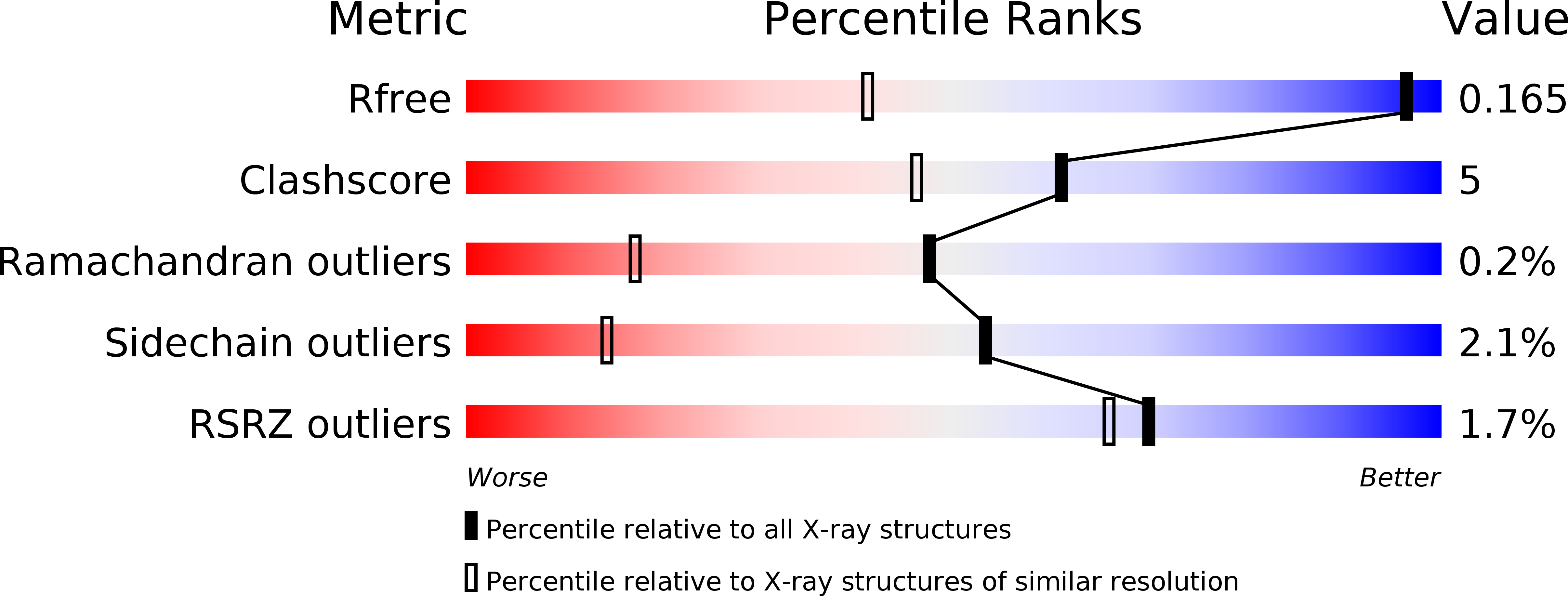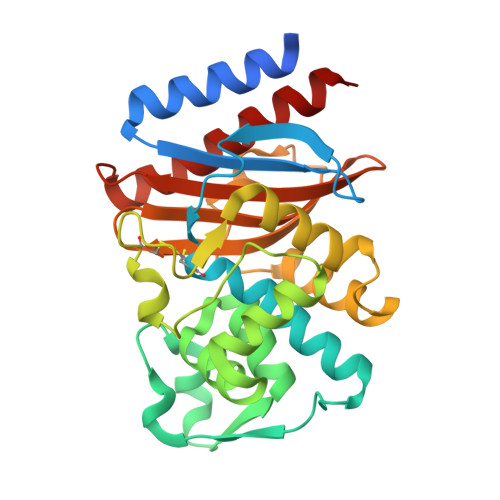Structural basis for progression toward the carbapenemase activity in the GES family of beta-lactamases.
Smith, C.A., Frase, H., Toth, M., Kumarasiri, M., Wiafe, K., Munoz, J., Mobashery, S., Vakulenko, S.B.(2012) J Am Chem Soc 134: 19512-19515
- PubMed: 23148776
- DOI: https://doi.org/10.1021/ja308197j
- Primary Citation of Related Structures:
4GNU, 4GOG, 4H8R - PubMed Abstract:
Carbapenem antibiotics have become therapeutics of last resort for the treatment of difficult infections. The emergence of class-A ¦Â-lactamases that have the ability to inactivate carbapenems in the past few years is a disconcerting clinical development in light of the diminished options for treatment of infections. A member of the GES-type ¦Â-lactamase family, GES-1, turns over imipenem poorly, but the GES-5 ¦Â-lactamase is an avid catalyst for turnover of this antibiotic. We report herein high-resolution X-ray structures of the apo GES-5 ¦Â-lactamase and the GES-1 and GES-5 ¦Â-lactamases in complex with imipenem. The latter are the first structures of native class-A carbapenemases with a clinically used carbapenem antibiotic in the active site. The structural information is supplemented by information from molecular dynamics simulations, which collectively for the first time discloses how the second step of catalysis by these enzymes, namely, hydrolytic deacylation of the acyl-enzyme species, takes place effectively in the case of the GES-5 ¦Â-lactamase and significantly less so in GES-1. This information illuminates one evolutionary path that nature has taken in the direction of the inexorable emergence of resistance to carbapenem antibiotics.
Organizational Affiliation:
Stanford Synchrotron Radiation Laboratory, Stanford University, Menlo Park, California 94025, United States. csmith@slac.stanford.edu



















